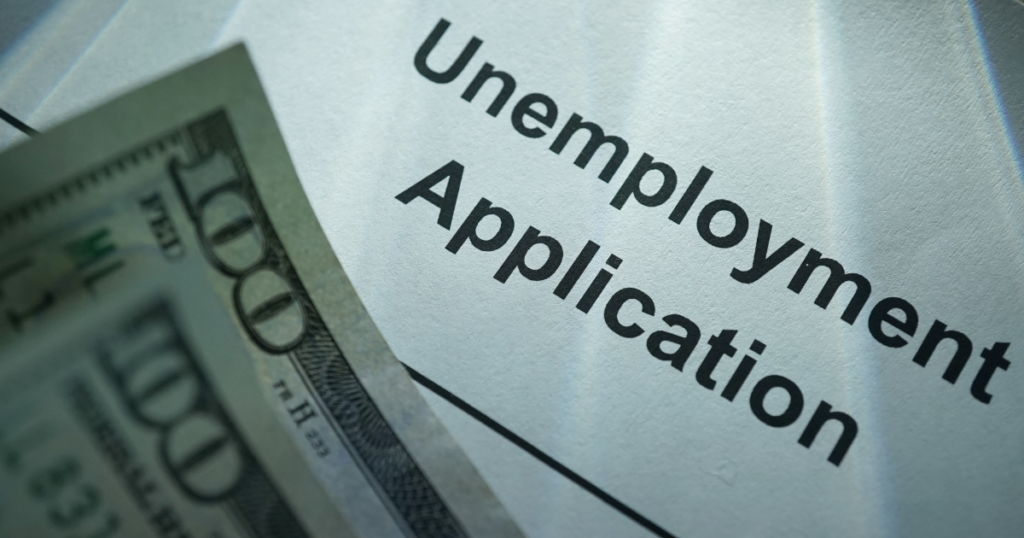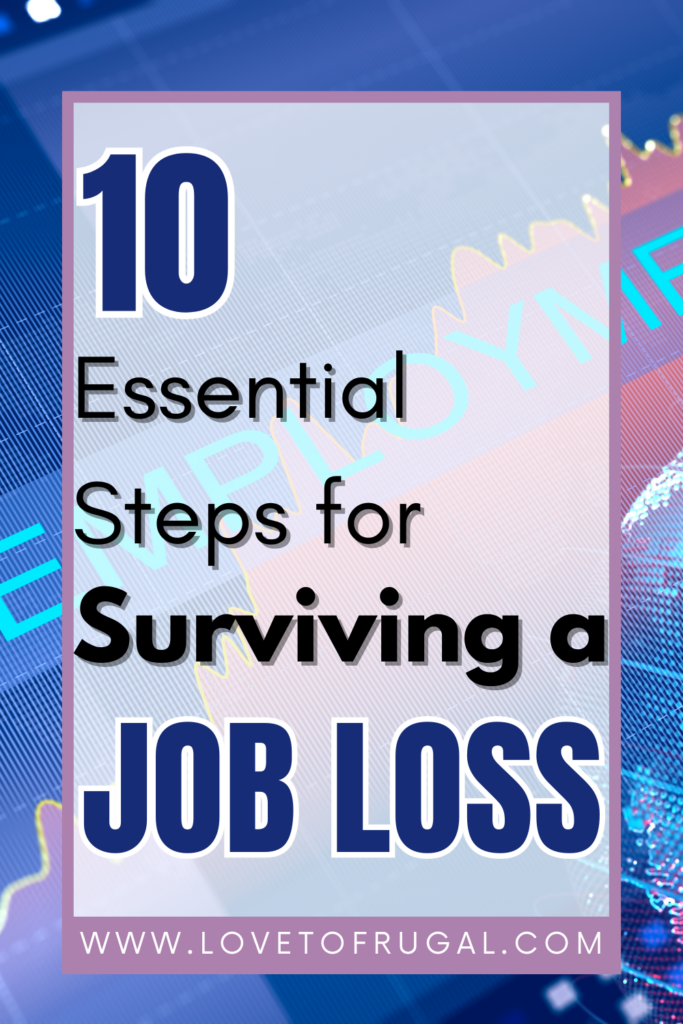How To Survive A Layoff And Stay Financially Secure
Figuring out how to survive a layoff (or any kind of job loss) can feel overwhelming, especially when the news is unexpected. Losing your job is one of life’s most stressful and unsettling experiences, shaking your sense of security, routine, and financial stability. You may be wondering how you’re going to make ends meet, and that’s completely normal. However, it’s important to remember that while this is a difficult chapter, it is also a temporary one. With the right strategies in place, you can navigate this transition, regain financial control, and find your next opportunity.
The key to learning how to survive a layoff is to take action, immediately—starting with understanding your financial situation, applying for available resources, and developing a plan to get back on your feet.
While I’ve never personally experienced a job loss, I’ve had family members and friends who have gone through it and it wasn’t easy. It can be a very emotional and scary experience, but in the end, they all came out in a much better place…both emotionally and financially.
So, in this post, I’ll walk you through each step of the process, from handling the initial emotional impact to finding new employment and securing your financial future. And, of course, I want to do it in a frugal-friendly way—helping you stretch every dollar, make smart financial decisions, and stay hopeful for the road ahead.
This post may contain affiliate links, which means that if you buy a suggested product, I will earn a small commission, at no extra cost to you. For more information, see my disclosure page.

Allow Yourself to Process the Loss
A job loss is not just about income—it can also affect your identity, confidence, and daily routine. It’s natural to experience a range of emotions, including shock, frustration, and even grief. All of these are completely normal but the key is to allow yourself to feel these emotions without letting them consume you.
Why Processing Your Emotions Matters
Bottling up emotions or ignoring the impact of job loss can lead to burnout, stress, and even depression. PLEASE, don’t do this. Instead, take time to acknowledge what you’re feeling. Journaling, talking to friends and family, or even seeking professional counseling can help you process the change in a healthy way.
Reframing the Experience
A layoff is rarely a personal failure. Most of the time, it’s a business decision based on financial constraints, restructuring, or economic downturns. Understanding how to survive a layoff with resilience and a smart plan can set you up for a better future. If you’ve been dreaming of starting a side hustle, this could be the push you need! Maybe you’ve wanted to take an online course to sharpen your skills—now’s your chance. Sometimes, it’s hard to see at the time it’s happening, but this could be a chance or opportunity that could open doors that you couldn’t even imagine, before. I’m sure you’ve heard the old saying, “When one door closes, another open.”

Understand Your Severance Package and Benefits
If your employer offers a severance package, it’s crucial to understand what it includes and how it can help you in the coming months. Some companies provide extended health benefits, career placement services, or even financial counseling in addition to severance pay.
Key Actions to Take
- Review the paperwork carefully. Make sure you fully understand any conditions attached to your severance pay, such as a non-compete agreement or waiver of claims.
- Ask questions. Do NOT be afraid to contact HR if anything is unclear. Find out if you can negotiate better terms. Sometimes, companies are willing to extend benefits or adjust severance terms if you ask.
- Consider legal advice. If you feel you were wrongfully terminated or that the severance terms are unfair, consulting an employment lawyer can be a smart move.
- Check for unused benefits. If you had a health savings account (HSA) or accrued paid time off, make sure you know what you’re entitled to.
Apply for Unemployment Benefits Immediately
Unemployment benefits can be a financial lifeline while you search for a new job. Every state has different requirements, but in general, you’ll need to apply as soon as possible, as processing can take several weeks.
How to Apply
- Visit your state’s unemployment website to determine eligibility and start the application process.
- Gather necessary documents, including past pay stubs, proof of employment, and identification.
- Continue searching for work while receiving benefits, as most states require proof of job-seeking efforts.
Common Myths About Unemployment Benefits
- “I can’t apply if I got severance.” – Not true! Some states allow severance recipients to still collect unemployment.
- “Applying will hurt my chances of getting a job.” – Employers rarely, if ever, know if you’re receiving unemployment.
- “I won’t qualify.” – Even if you think you may not be eligible, it’s worth applying to check. Many people are surprised to find they qualify!

Assess Your Financial Situation and Prioritize Expenses
A critical part of how to survive a layoff is knowing exactly where you stand financially. With no regular paycheck coming in, it’s crucial to evaluate your current financial standing. Take stock of your savings, expenses, and any incoming financial support.
Immediate Steps to Take
- List your essential expenses. Focus on necessities…housing, utilities, food, transportation, and insurance.
- Identify any emergency funds. If you have a rainy-day fund, now is the time to use it, wisely.
- Look for financial assistance programs. Many organizations offer rent relief, food assistance, and utility support.
Cut Unnecessary Expenses Immediately
To make your savings last, you’ll need to eliminate or reduce non-essential spending. This means going through your budget with a fine-tooth comb. It’s also a great opportunity to actually see where your money’s been going.
Where to Cut Back
- Cancel non-essentials. Streaming services, gym memberships, and subscriptions can be paused or eliminated. If you have a favorite streaming service, consider sharing a subscription with family.
- Reduce grocery costs. Stick to meal planning, buy in bulk, and cook at home. As Dave Ramsey says, “Don’t go into a restaurant unless you’re working there.”
- Negotiate bills. Call providers to lower rates on phone, internet, and insurance. Every time I have ever called a provider to negotiate, they have been more than happy to accommodate. It never, ever hurts to ask. The worst thing that can happen is they’ll say “No”. If they do, then you can look elsewhere for a better rate.
You might be interested in reading: Reverse Meal Planning: Easy Solutions To Save Time And Money
Update Your Resume and LinkedIn Profile
A crucial part of how to survive a layoff is ensuring you’re ready for the job hunt. Your resume and LinkedIn should highlight your skills and achievements.
Tips for an Effective Resume
If there’s ever been a time to brag on yourself, this is it. Don’t sell yourself short, but also never lie on your resume.
- Tailor each resume to the job you’re applying for.
- Use strong action verbs and measurable achievements.
- Optimize for Applicant Tracking Systems (ATS) by incorporating relevant keywords. (ATS software is used by employers to streamline the hiring process.)
LinkedIn Optimization
- Update your profile with a strong headline and summary.
- Connect with industry professionals and join relevant groups in the field you’re interests in.
- Engage with posts and share valuable content to increase your visibility.

Start Your Job Search with a Strategy
One of the smartest strategies for how to survive a layoff is to approach your job search with intention. Instead of applying randomly, focus on targeted applications that align with your skills and experience.
Where to Look for Jobs
- Job boards like Indeed, LinkedIn, and Glassdoor.
- Networking events and industry meetups.
- Recruiters and staffing agencies.
- Word of mouth…Let your network (friends, co-workers, relatives, acquaintances) know you’re looking. Many jobs come from referrals rather than applications.
Take Care of Your Mental Health
Job loss can be emotionally draining. Engage in stress-reducing activities like exercise, meditation, or spending time with loved ones. The main thing is not to isolate yourself. Consider joining support groups or seeking therapy if you need to.
Find Temporary Work or Side Income
Freelancing, gig work, or even selling unused items can help you stay afloat financially while you search for a new job. Remember…the bills still need to be paid.
Plan for the Future
Once you secure new employment, start rebuilding savings, set some financial goals, and try to prepare for potential future job uncertainties. (There’s no such thing as ‘job security’, anymore.)
Final Thoughts…Moving Forward After a Job Loss
Losing a job can feel like the rug has been pulled out from under you, but take a deep breath and know…you will get through this. A layoff isn’t the end of the road; it’s just a detour, and sometimes detours lead to even better destinations.
The most important thing right now is to take it one step at a time. Focus on what you can control…your finances, your job search, and your well-being. Lean on your support system, explore new opportunities, and don’t be afraid to think outside the box. Whether it’s picking up a side hustle, learning a new skill, or finally launching that business idea you’ve had in the back of your mind, this season of uncertainty can actually open new doors.
And remember, frugal living isn’t just about saving money. It’s about being resourceful, resilient, and making the most of what you have. You know how to stretch a dollar, find creative solutions, and thrive even when times are tough. Knowing how to survive a layoff is about more than just tightening your budget. It’s about adapting, staying positive, and preparing yourself for a stronger financial future.
This is just one chapter in your story. It’s not the whole book. Keep moving forward, keep believing in yourself, and soon, you’ll look back and see this as the moment you turned things around. You’ve got this!
For more money-saving tips and strategies, be sure to subscribe to our newsletter at Love to Frugal! You can also follow me on Pinterest, Facebook & Instagram for even more money saving, frugal living tips!
You may also be interested in:
How to Track Your Spending And Save More Money
How To Prepare For Another Great Depression-Grandma’s Frugal Tips


